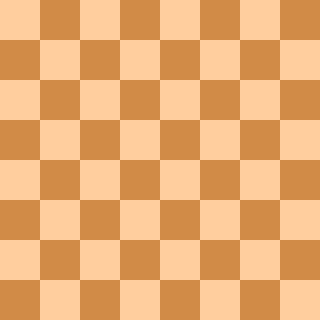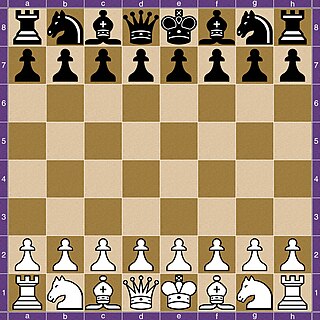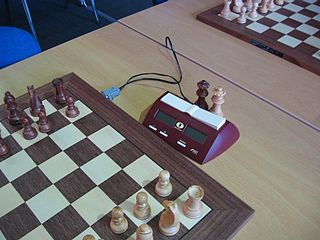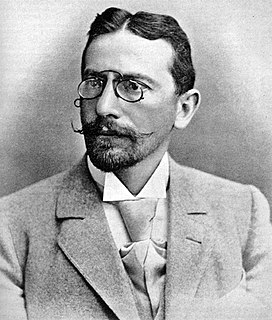 W
WAlekhine's gun is a formation in chess named after the former world chess champion Alexander Alekhine. It is a specific kind of battery. This formation was named after a game he played against Aron Nimzowitsch in Sanremo 1930, ending with Alekhine's decisive victory.
 W
WIn chess, a back-rank checkmate is a checkmate delivered by a rook or queen along a back rank in which the mated king is unable to move up the board because the king is blocked by friendly pieces on the second rank. A typical position is shown to the right.
 W
WIn chess, a backward pawn is a pawn that is behind all pawns of the same color on the adjacent files and cannot be safely advanced. In the diagram, the black pawn on the c6-square is backward.
 W
WA battery in chess is a formation that consists of two or more pieces on the same rank, file, or diagonal. It is a tactic involved in planning a series of captures to remove the protection of the opponent's king, or to simply gain in the exchanges.
 W
WBlindfold chess is a form of chess play wherein the players do not see the positions of the pieces and do not touch them. This forces players to maintain a mental model of the positions of the pieces. Moves are communicated via a recognized chess notation.
 W
WA block is a defensive tactic in chess in response to an attack, consisting of interposing a piece between the opponent's attacking piece and the piece being attacked. This type of blocking will only work if the attacking piece is a type that can move linearly an indefinite number of squares such as a queen, rook, or bishop and there is at least one empty square in the line between the attacking and attacked piece. Blocking is not an option when the attacking piece is directly adjacent to the piece it is attacking, or when the attacking piece is a knight. When an opponent's attack on a piece is blocked, the blocking piece is to some extent pinned, either relatively or absolutely, until a future move by either side allows it to be unpinned.
 W
WCastling is a move in the game of chess involving a player's king and either of the player's original rooks. It is the only move in chess in which a player moves two pieces in the same move, and it is the only move aside from the knight's move where a piece can be said to "jump over" another.
 W
WA check is a condition in chess, shogi, xiangqi, and janggi that occurs when a player's king is under threat of capture on their opponent's next turn. A king so threatened is said to be in check. A player must get out of check, if possible, by interposing a piece between the threatening piece and the king, capturing the threatening piece, or moving the king to a square where it is no longer in check. If the player cannot move out of check, the game ends in checkmate and the player loses. Players cannot make any move that puts their own king in check.
 W
WCheckmate is a game position in chess and other chess-like games in which a player's king is in check and there is no way to avoid the threat. Checkmating the opponent wins the game.
 W
WIn chess, several checkmate patterns occur frequently enough to have acquired specific names in chess commentary. The diagrams that follow show these checkmates with White checkmating Black.
 W
WA chess opening or simply an opening refers to the initial moves of a chess game. The term can refer to the initial moves by either side, White or Black, but an opening by Black may also be known as a defense. There are dozens of different openings, and hundreds of variants. The Oxford Companion to Chess lists 1,327 named openings and variants. These vary widely in character from quiet positional play to wild tactical play. In addition to referring to specific move sequences, the opening is the first phase of a chess game, the other phases being the middlegame and the endgame.
 W
WThe game of chess is commonly divided into three phases: the opening, middlegame, and endgame. There is a large body of theory regarding how the game should be played in each of these phases, especially the opening and endgame. Those who write about chess theory, who are often also eminent players, are referred to as "theorists" or "theoreticians".
 W
WA Closed Game is a chess opening that begins with the moves:1. d4 d5
 W
WIn chess, connected pawns are two or more pawns of the same color on adjacent files, as distinct from isolated pawns. These pawns are instrumental in creating pawn structure because, when diagonally adjacent, like the two rightmost white pawns, they form a pawn chain, a chain where the one behind protects the one in front. When attacking these chains, the weak spot is the backmost pawn, because it is not protected.
 W
WDeflection in chess is a tactic that forces an opposing piece to leave the square, rank or file it occupies, thus exposing the king or a valuable piece. It is typically used in the context of a combination or attack, where the deflected piece is critical to the defence. Deflection may be used as a gambit to cause an opponent's piece to move to a less suitable square. Deflections are often used as part of a combination which may involve other types of chess tactics as well.
 W
WIn chess, a discovered attack is a direct attack revealed when one piece moves out of the way of another. Discovered attacks can be extremely powerful, as the piece moved can make a threat independently of the piece it reveals. Like many chess tactics, they succeed because the opponent is unable to meet two threats at once. While typically the consequence of a discovered attack is the gain of material, they do not have to do this to be effective; the tactic can be used merely to gain a tempo. If the discovered attack is a check, it is called a discovered check.
 W
WIn chess and other related games, a double check is a check delivered by two pieces simultaneously. In chess notation, it is almost always represented the same way as a single check ("+"), but is sometimes symbolized by "++". This article uses the latter convention for clarity.
 W
WIn chess, doubled pawns are two pawns of the same color residing on the same file. Pawns can become doubled only when one pawn captures onto a file on which another friendly pawn resides. In the diagram, the white pawns on the b-file and e-file are doubled. The pawns on the e-file are doubled and isolated.
 W
WIn chess, there are a number of ways that a game can end in a draw, neither player winning. Usually, in tournaments a draw is worth a half point to each player, while a win is worth one point to the victor and none to the loser.
 W
WEn passant is a move in chess. It is a special pawn capture that can only occur immediately after a pawn makes a move of two squares from its starting square, and it could have been captured by an enemy pawn had it advanced only one square. The opponent captures the just-moved pawn "as it passes" through the first square. The result is the same as if the pawn had advanced only one square and the enemy pawn had captured it normally.
 W
WAn endgame tablebase is a computerized database that contains precalculated exhaustive analysis of chess endgame positions. It is typically used by a computer chess engine during play, or by a human or computer that is retrospectively analysing a game that has already been played.
 W
WIn chess, an exchange variation is a type of opening in which there is an early, voluntary exchange of pawns or pieces. Such variations are often quieter than other lines because the early release of tension minimizes the possibility of surprise tactics or sharp, forcing lines, particularly where it results in a symmetrical pawn structure.
 W
WFast chess is a type of chess in which each player is given less time to consider their moves than normal tournament time controls allow. Fast chess is further subdivided, by decreasing time controls, into rapid chess, blitz chess, and bullet chess. Armageddon chess is a particular variation in which different rules apply for each of the two players.
 W
WIn chess, a flight square or escape square is a safe square to which a king or other piece can move if it is threatened. A bishop sometimes begins to get hemmed in after the Morphy Defence is used, and c2–c3 may be used to create an extra escape square.
 W
WIn chess, a fork is a tactic whereby a single piece makes two or more direct attacks simultaneously. Most commonly two pieces are threatened, which is also sometimes called a double attack. The attacker usually aims to gain material by capturing one of the opponent's pieces. The defender often finds it difficult to counter two or more threats in a single move. The attacking piece is called the forking piece; the pieces attacked are said to be forked. A piece that is defended can still be said to be forked if the forking piece has a lower value.
 W
WA gambit is a chess opening in which a player sacrifices material with the aim of achieving a subsequent positional advantage. The word "gambit" is also sometimes used to describe similar tactics used by politicians or business people in a struggle with rivals in their respective fields, for example "The early election was a risky gambit by Theresa May".
 W
WIn chess, a half-open file is a file with pawns of only one color. The half-open file can provide a line of attack for a player's rook or queen. A half-open file is generally exploited by the player with no pawns on it.
 W
WHandicaps in chess are variant ways to enable a weaker player to have a chance of winning against a stronger one. There are a variety of such handicaps, such as material odds, extra moves, extra time on the chess clock, and special conditions. Various permutations of these, such as "pawn and two moves", are also possible.
 W
WHypermodernism is a school of chess that emerged after World War I. It featured challenges to the chess ideas of central European masters, including Wilhelm Steinitz's approach to the centre and the rules established by Siegbert Tarrasch.
 W
WIn chess, an isolated pawn is a pawn that has no friendly pawn on an adjacent file. Isolated pawns are usually a weakness because they cannot be protected by other pawns. The square in front of the pawn may become a good outpost or otherwise a good square for the opponent to anchor pieces. Isolated pawns most often become weaker in the endgame, as there are fewer pieces available to protect the pawn.
 W
WIn chess, a king walk, also known as a king march, steel king or fighting king, refers to occasions where the king travels up the board in the middle game or opening, often involved in a mating attack against the opposing king. This is a highly unusual occurrence, since the safety of the king is considered paramount, and players are recommended to keep the king out of harm's way, at least until the endgame. In contrast, Wilhelm Steinitz, often known as the father of modern chess, was renowned for his maxim that "the king is a fighting piece". Dutch chess historian and author Tim Krabbé has documented over one hundred such games.
 W
WIn chess, luft designates the space or square left by a pawn move into which a king may then retreat, especially such a space made intentionally to avoid back-rank checkmate. A move leaving such a space is often said to "give the king some luft". The term "luft", "lufting", or "lufted" may also be used to refer to the movement of the relevant pawn creating luft.
 W
WThe Maróczy Bind is a pawn formation in chess, named after the Hungarian grandmaster Géza Maróczy and primarily played against the Sicilian Defence. It is characterised by white pawns on c4 and e4, with White's d-pawn having been exchanged for Black's c-pawn.
 W
WThe Morphy number is a measure of how closely a chess player is connected to Paul Morphy (1837–1884) by way of playing chess games.
 W
WAn open file in chess is a file with no pawns of either color on it. In the diagram, the e-file is an open file. An open file can provide a line of attack for a rook or queen. Having rooks or queens on open files or half-open files is considered advantageous, as it allows a player to attack more easily, since a rook or queen can move down the file to penetrate the opponent's position.
 W
WAn Open Game is a chess opening that begins with the following moves:1. e4 e5
 W
WAn outpost is a square on the fourth, fifth, sixth, or seventh rank which is protected by a pawn and which cannot be attacked by an opponent's pawn. Such a square is a hole for the opponent. In the figure to the right, c4 is an outpost, occupied by White's knight. It cannot be attacked by Black's pawns – there is no pawn on the d-file and Black's pawn on the b-file is too far advanced.
 W
WIn chess, a passed pawn is a pawn with no opposing pawns to prevent it from advancing to the eighth rank; i.e. there are no opposing pawns in front of it on either the same file or adjacent files. A passed pawn is sometimes colloquially called a passer. Passed pawns can be an advantage because only the opponent's pieces can stop them from promoting.
 W
WThe term chess prodigy refers to a young child who possesses an aptitude for the game of chess, that far exceeds what might be expected at their age. Their prodigious talent will often enable them to defeat experienced adult players and even titled chess masters. Some chess prodigies have gone on to become World Chess Champion.
 W
WPromotion in chess is a rule that requires a pawn that reaches the eighth rank to be replaced by the player's choice of a bishop, knight, rook, or queen of the same color. The piece chosen cannot be another king nor another pawn. The new piece replaces the pawn on its square on the same move. The choice of the new piece is not limited to pieces previously captured, thus promotion can result in a player owning, for example, two or more queens despite starting the game with one.
 W
WIn chess, a queen sacrifice is a move giving up a queen in return for tactical/positional advantage or other compensation.
 W
WA Rundlauf in chess is a thematic motif which occurs rarely in over the board play and occasionally is the subject of a chess composition or chess problem. A rundlauf is the movement of a single piece in a geometric shape such as a square or diamond, which accomplishes either a tactical or strategic goal The idea often involves zugzwang, or repeating a position in order to create zugzwang, though it does not necessarily have to involve zugzwang. A famous example of a rundlauf is the well known endgame study the Saavedra position.
 W
WIn chess, a sacrifice is a move giving up a piece with the objective of gaining tactical or positional compensation in other forms. A sacrifice could also be a deliberate exchange of a chess piece of higher value for an opponent's piece of lower value.
 W
WIn chess, Scholar's Mate is the checkmate achieved by the following moves, or similar:1. e4 e5 2. Qh5 Nc6 3. Bc4 Nf6?? 4. Qxf7#
 W
WA simultaneous exhibition or simultaneous display is a board game exhibition in which one player plays multiple games at a time with a number of other players. Such an exhibition is often referred to simply as a "simul".
 W
WIn chess, a smothered mate is a checkmate delivered by a knight in which the mated king is unable to move because he is surrounded by his own pieces. In rare situations, the surrounding pieces may include an opponent's defended piece, which the king can not capture.
 W
WStalemate is a situation in the game of chess where the player whose turn it is to move is not in check but has no legal move. The rules of chess provide that when stalemate occurs, the game ends as a draw. During the endgame, stalemate is a resource that can enable the player with the inferior position to draw the game rather than lose. In more complex positions, stalemate is much rarer, usually taking the form of a swindle that succeeds only if the superior side is inattentive. Stalemate is also a common theme in endgame studies and other chess problems.
 W
WIn chess, a swindle is a ruse by which a player in a losing position tricks their opponent, and thereby achieves a win or draw instead of the expected loss. It may also refer more generally to obtaining a win or draw from a clearly losing position. I. A. Horowitz and Fred Reinfeld distinguish among "traps", "pitfalls", and "swindles". In their terminology, a "trap" refers to a situation where a player goes wrong through their own efforts. In a "pitfall", the beneficiary of the pitfall plays an active role, creating a situation where a plausible move by the opponent will turn out badly. A "swindle" is a pitfall adopted by a player who has a clearly lost game. Horowitz and Reinfeld observe that swindles, "though ignored in virtually all chess books", "play an enormously important role in over-the-board chess, and decide the fate of countless games".
 W
WThe Tarrasch rule is a general principle that applies in the majority of chess middlegames and endgames. Siegbert Tarrasch (1862–1934) stated the "rule" that rooks should be placed behind passed pawns – either yours or your opponent's. The idea behind the guideline is that (1) if a player's rook is behind his passed pawn, the rook protects it as it advances, and (2) if it is behind an opponent's passed pawn, the pawn cannot advance unless it is protected along its way.
 W
WIn chess and other chess-like games, a tempo is a "turn" or single move. When a player achieves a desired result in one fewer move, the player is said to "gain a tempo"; conversely, when a player takes one more move than necessary, the player is said to "lose a tempo". Similarly, when a player forces their opponent to make moves not according to their initial plan, one is said to "gain tempo" because the opponent is wasting moves. A move that gains a tempo is often called "a move with tempo".
 W
WA time control is a mechanism in the tournament play of almost all two-player board games so that each round of the match can finish in a timely way and the tournament can proceed. Time controls are typically enforced by means of a game clock, where the times below are given per player. Time pressure is the situation of having very little time on a player's clock to complete their remaining moves.
 W
WUndermining is a chess tactic in which a defensive piece is captured, leaving one of the opponent's pieces undefended or under-defended. The opponent has the unpalatable choice of recapturing or saving the undefended piece. A possible response is to sacrifice the piece whose defense was undermined before capturing the piece which just took the defender.
 W
WThe wrong bishop is a situation in chess endgame when a bishop on the other color of square of the chessboard would either win a game instead of draw or salvage a draw from an inferior position ; in other words, a bishop is unable to guard squares of the other color. This most commonly occurs with a bishop and one of its rook pawns, but it also occurs with a rook versus a bishop, a rook and one rook pawn versus a bishop, and possibly with a rook and one bishop pawn versus a bishop.